
How did the Soviet Union dissolve? Find out on this podcast. [1:06]
- Subject:
- Social Studies
- Material Type:
- Audio/Video
- Provider:
- Center For Civic Education
- Date Added:
- 12/01/2023

How did the Soviet Union dissolve? Find out on this podcast. [1:06]

This site explores the Cold War race to develop the hydrogen bomb, a weapon that would change the world. Content details all the people who were involved in the race for the H-Bomb, as well as notable events during this time period. Information is supplemented with primary source material, descriptive maps, and a detailed timeline.
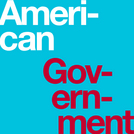
American Government is designed to meet the scope and sequence requirements of the single-semester American government course. This title includes innovative features designed to enhance student learning, including Insider Perspective features and a Get Connected Module that shows students how they can get engaged in the political process. The book provides an important opportunity for students to learn the core concepts of American government and understand how those concepts apply to their lives and the world around them. American Government includes updated information on the 2016 presidential election.Senior Contributing AuthorsGlen Krutz (Content Lead), University of OklahomaSylvie Waskiewicz, PhD (Lead Editor)


A resource with extensive information on all aspects of Sakharov's life. Arranged chronologically.

View President Kennedy's remarks on the first anniversary of the Alliance for Progress March 13, 1962 given to Latin American diplomats at the White House.
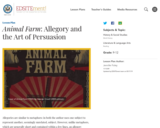
Allegories are similar to metaphors: in both the author uses one subject to represent another, seemingly unrelated, subject. However, unlike metaphors, which are generally short and contained within a few lines, an allegory extends its representation over the course of an entire story, novel, or poem. This lesson plan will introduce students to the concept of allegory by using George Orwell’s widely read novella, Animal Farm, which is available on Project Gutenberg.

This resource offers an in-depth exploration of the U.S. space program and the role President John F. Kennedy took in setting the agenda for manned space flight to the moon.
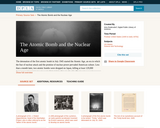
This collection uses primary sources to explore the Atomic Bomb and the Nuclear Age it started. Digital Public Library of America Primary Source Sets are designed to help students develop their critical thinking skills and draw diverse material from libraries, archives, and museums across the United States. Each set includes an overview, ten to fifteen primary sources, links to related resources, and a teaching guide. These sets were created and reviewed by the teachers on the DPLA's Education Advisory Committee.

Smithsonian Magazine correspondent Tom Mueller reflects on the legacy of the Berlin Wall. (June 2006)
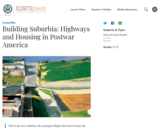
This lesson highlights the changing relationship between the city center and the suburb in the postwar decades, especially in the 1950s. Students will look at the legislation leading up to and including the Federal Highway Act of 1956. They will also examine documents about the history of Levittown, the most famous and most important of the postwar suburban planned developments.
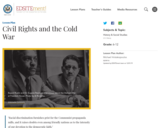
This lesson plan attempts to dissolve the artificial boundary between domestic and international affairs in the postwar period to show students how we choose to discuss history.

This resource enables the viewer to explore various events and topics of the Cold War through learning games, primary documents, and a tour through an interactive bunker.

A comprehensive search into the growing distrust between Allied countries at the beginning of the Cold War. Includes great primary source documents and questions directed toward students.

An in-depth study of international relations at the time of the Potsdam Conference. Includes political cartoons, primary source documents, and teacher resources.

An indepth look at the Truman Doctrine and the Marshall Plan with primary sources and student activities.

Outline of proceedings that took place at the Yalta Conference. Features student questions.
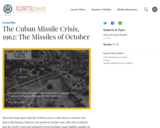
Most historians agree that the world has never come closer to nuclear war than it did during a thirteen-day period in October 1962, after the revelation that the Soviet Union had stationed several medium-range ballistic missiles in Cuba. This lesson will examine how this crisis developed, how the Kennedy administration chose to respond, and how the situation was ultimately resolved.
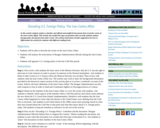
In this activity students analyze a timeline and official and unofficial documents that reveal the events of the Iran-Contra Affair. This activity also models the types of questions that can help students analyze foreign policy documents from other events. The activity instructions include suggestions for how to differentiate the activity for students with different reading levels.